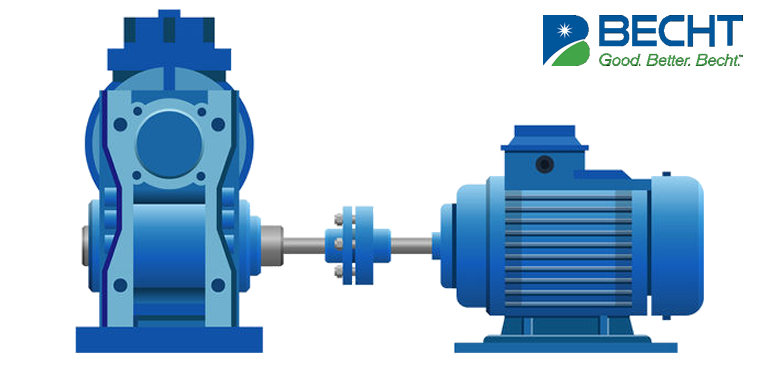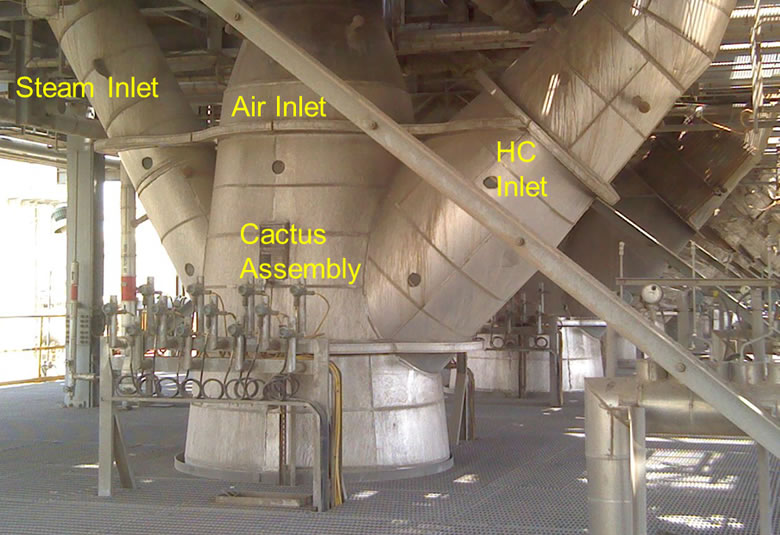The Potential Pitfalls of Fabricated Machinery Foundations
A new process unit was designed and built by a petrochemical manufacturer. As part of the project, two 50 horespower blowers were installed. Rotating equipment of this type is traditionally installed at grade on an engineered monolithic concrete foundation with rebar and anchor bolts. A suitable soleplate or baseplate is then grouted to the foundation to rigidly support the motor / blower unit. This insures that alignment between the motor and blower is maintained. Also, since the mass of the foundation is usually designed to be five to seven times the mass of the mounted equipment, residual vibration is reduced as well. During the design phase of the project the piping connection of the vertical vessel from which the blower took suction was located on the fourth floor of the unit. Instead of locating the blower at grade on a foundation as described above and running process piping to the blower and then back to the process, a decision was made to minimize the piping cost by locating the blowers and 50 horsepower motors on a fabricated steel foundation near the drum on the fourth floor. The fabricated steel foundation was constructed by welding a two inch thick flat plate to the tops of four vertical H-beams which were about four feet tall. The bottoms of the four H-beams were then welded to large horizontal structural steel members.
All motors bought for the project were ordered with very stringent vibration limits. Those specifications required that during a four hour solo run (motor and driven equipment on foundation and aligned but not coupled) the motor overall vibration amplitude could be no more than 0.08 inches per second (ips) and no one spectral component could be larger than 0.04 ips. At least 96% of all motors tested during this project met this specification.
The blowers and 50 horsepower motors described above were placed on the elevated, fabricated foundation and aligned. When the motor was solo run for acceptance testing, the measured vibration in the horizontal direction was measured at 0.5 ips. This was six times the maximum allowed! A Frequency Response Function (FFT) test revealed that all of the vibration occurred at 1800 cpm (running speed of the motor). The results also showed that a system resonance existed at 1800 cpm. The small vibratory energy being supplied by the motor (later determined to be 0.04 ips) was being amplified due to resonance by a factor of 12. The unit could not be reliably operated under these conditions. If placed in service the unit would have most likely experienced vibrations as high as 2 ips to 3 ips. The resonance at 1800 cpm had to be shifted away from the 1800 rpm operating speed.
A resonance can easily be shifted upward by increasing the stiffness of the system. Easy, right? Just add some bracing! Maybe, but maybe not. In order to add bracing to successfully raise a natural frequency, it is necessary to know the mode shape of the system; or in other words, exactly how much and where the system is moving. Are points in phase or out of phase with each other and how much? If a brace is added at a point that is not moving (a nodal point) the stiffness of the total system will be unaffected and the natural frequency may not change as expected. So the key to getting a “fix” right the first time is to see how the motor, blower, baseplate and H-beam legs are moving in relation to each other. If we could only see all the parts in operation, slow them down and exaggerate their movements by a common factor, we could “see” how they are moving and where to place a brace for greatest effect. Well, it can be done! It’s called an “Operating Deflection Shape”. A model of the item can be viewed in slow motion from any side or view to see just how the system is behaving. There are several manufacturers of software and vibration analyzers that supply a means of doing just that. A simple system model is generated using a computer. Then measurement locations are selected on the model and labeled. The locations are downloaded to an analyzer telling it where and what type measurement to collect. The structure and rotating equipment is instrumented and the rotating equipment is then placed into operation long enough to collect vibration amplitude and phase measurements at each of the selected points. Data from the analyzer is transferred to the computer model. Finally, with the combined aid of our vibration monitoring and computer tools, we can put our model into motion. We can reduce the speed of movement, and scale the amplitudes up until they are exaggerated and easy to follow. To view the computer generated animation of the motor/blower system being discussed, CLICK HERE or go to http://youtu.be/m0LnjcdjcxM.
The model shows that the two H-beam legs on each end are moving in phase with each other. It also shows that the two legs on one end are moving 180 degrees out of phase with the two legs on the other end. When each of the legs is viewed by itself it’s apparent that the motion is all in phase and that the movement is greater the higher up the leg we measure. The most significant observations are that the connection between the two inch thick baseplate and the tops of each H-beam are weak, and the H- beams are bending side-to-side stressing the connections at the bottom. Now that we can see what is actually occurring, it’s clear that if we place a ½ inch plate onto each end and bolt it to the vertical legs every six inches as well as the two inch top plate, we will greatly increase the stiffness in the horizontal direction. The H-beam joints will be stiffened at the top and bottom connections. After a ½ inch plate was bolted at each end, solo vibration data was again taken and all readings were reduced to 0.04 ips. The 1800 cpm resonance was shifted upward away from operating speed of 1800 rpm.
Resonance is a common occurrence when mounting rotating equipment on fabricated steel foundations. If not identified and corrected in the early stages of acceptance testing, this resonance and accompanying vibration can become a chronic maintenance problem resulting in very high maintenance cost and high frequency of failures. Should a facility design dictate that rotating equipment be installed on a fabricated steel foundation rather than a conventional concrete and grouted baseplate design, extra attention and vibration monitoring should be planned into the equipment acceptance testing.
Becht Engineering Advisers have helped industry solve some of the most challenging and complex vibration issues.
[readon2 url=”index.php?option=com_rsform&view=rsform&formId=4&Itemid=620″]Click to Request Info[/readon2]






